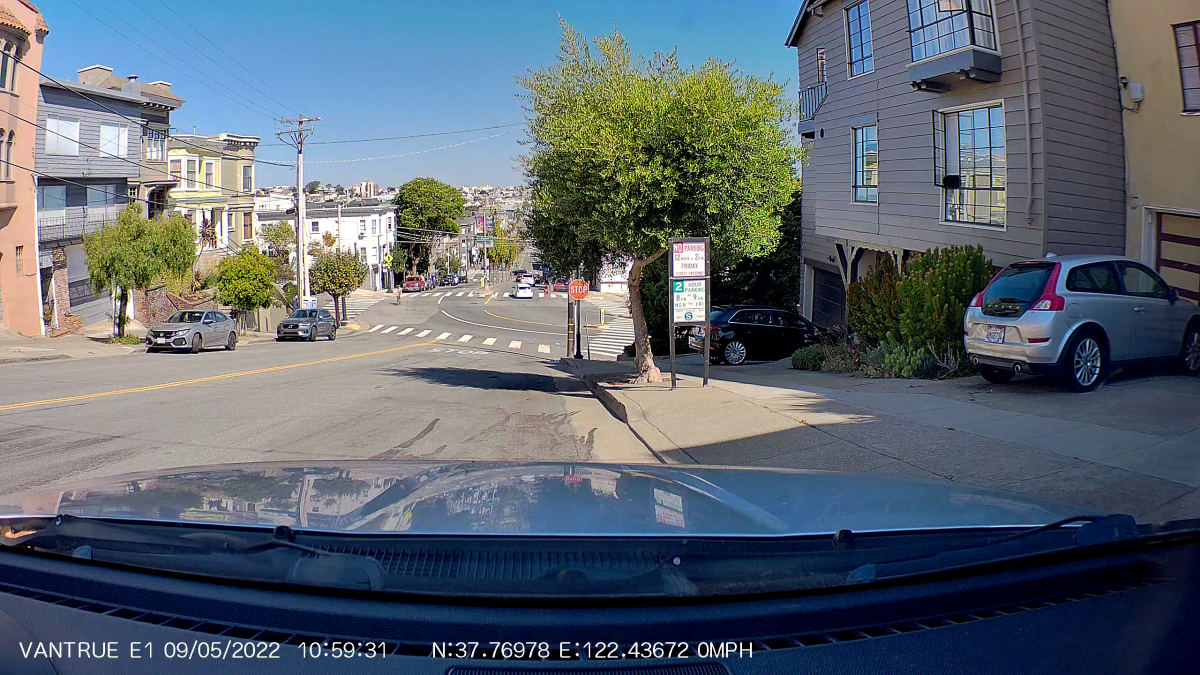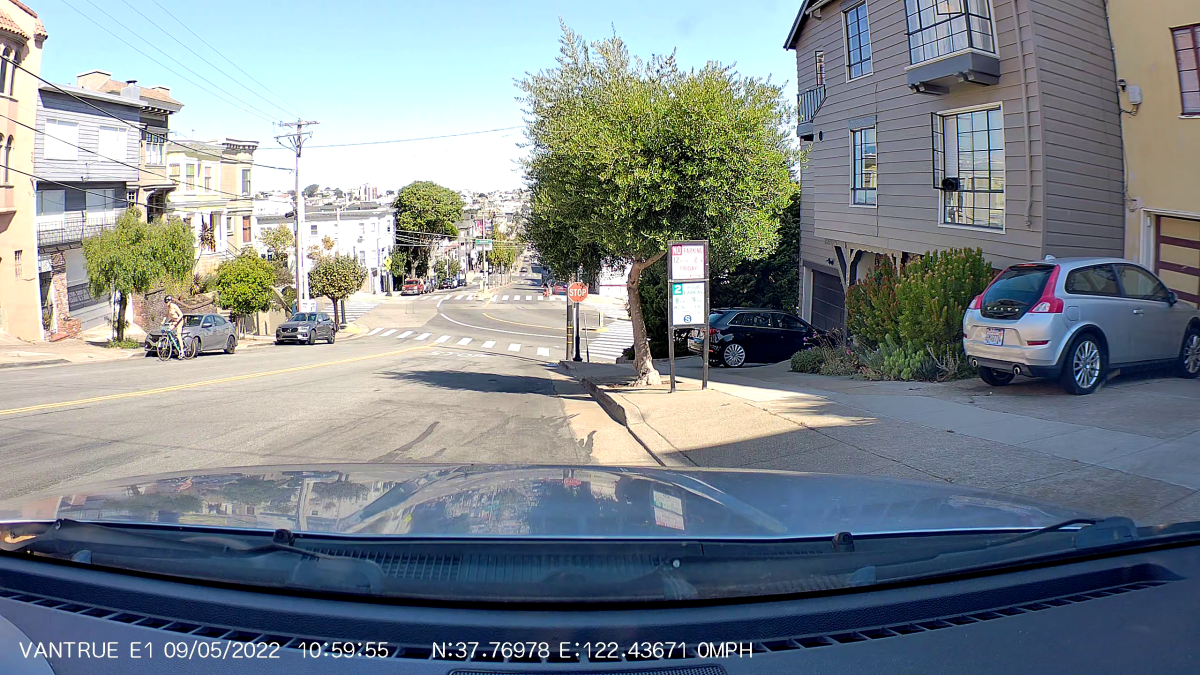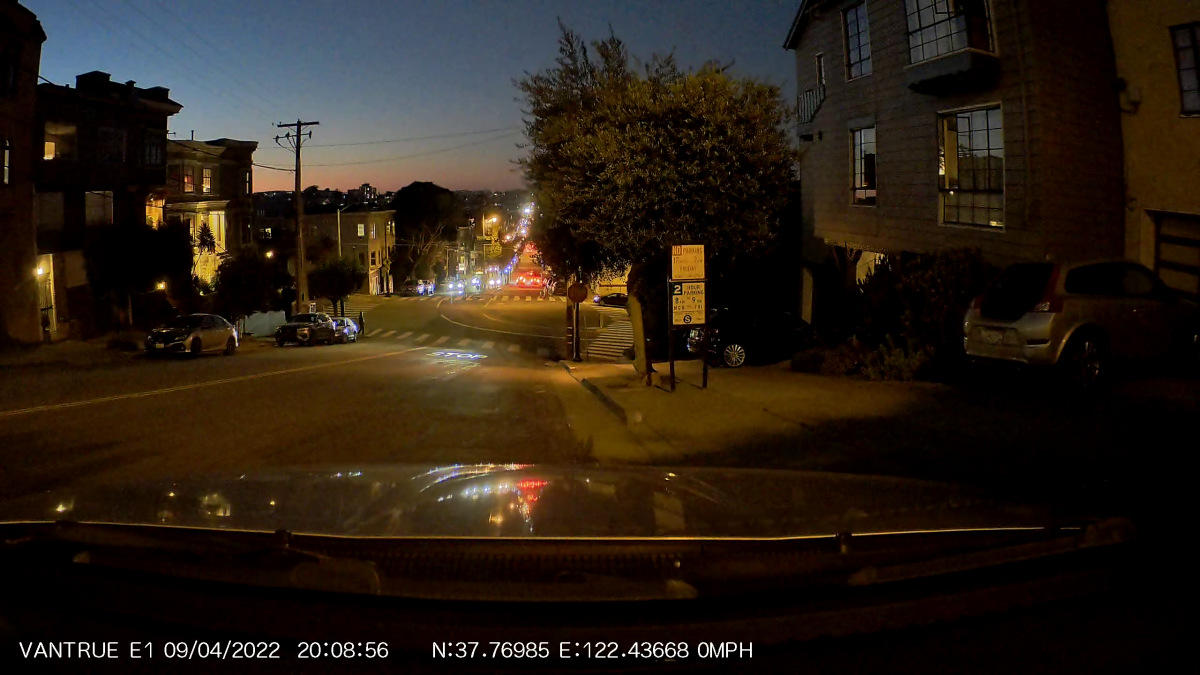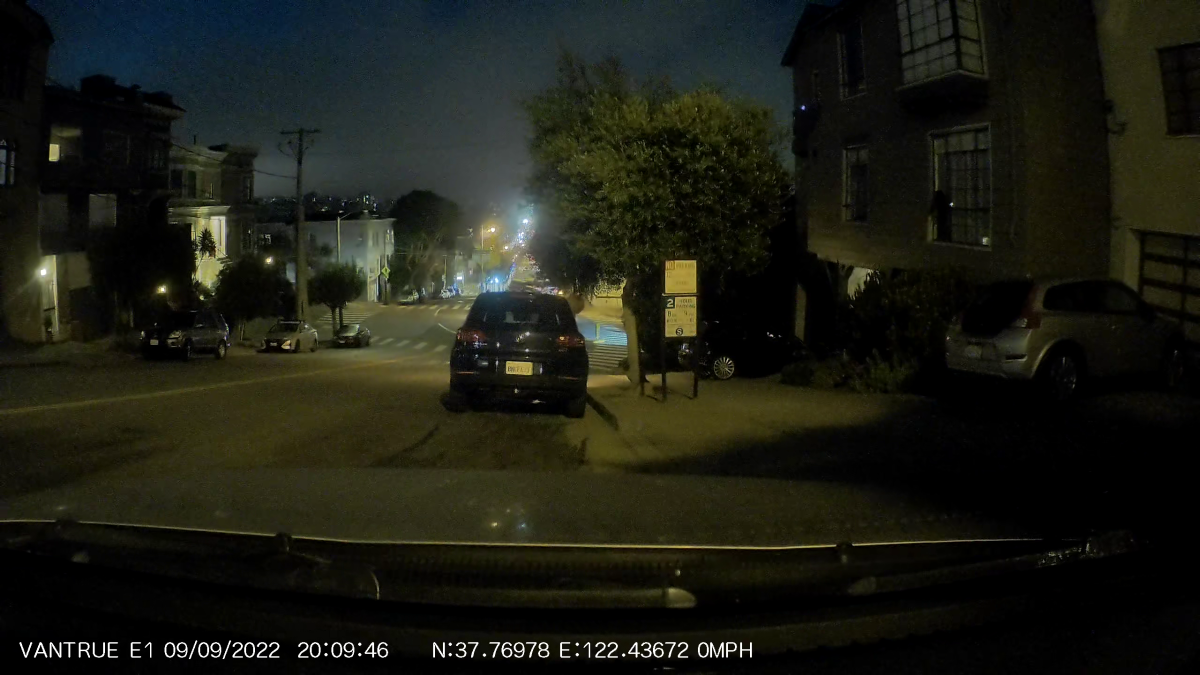 Image: Vantrue
Image: Vantrue
At a glance
Expert’s Rating
Pros
Small profilePhone connectivity and super capable appGood day captures (with filter)Voice remote
Cons
Grainy night capturesOptional filter degrades night captures further
Our Verdict
We love the E1’s diminutive size, excellent display, GPS and voice remote. But best day captures require an optional filter, which you must remove for acceptable night captures—a switch most users won’t like or remember.
Price When Reviewed
$150
Best Prices Today: Vantrue Element 1 dash cam
RetailerPrice
One of the reasons we rate Garmin’s diminutive dash cams so highly is their minimal interference with your vision. Welcome $150 Vantrue Element 1, we like you for the same reasons. We also like the voice control and app.
Alas, day capture quality really only passes muster with an optional $20 polarizing filter which we had to remove at night to get workable low light captures. A process that got bothersome quickly–when we remembered to do it.
This review is part of our ongoing roundup of the best dash cams. Go there for more reviews and buying advice.
Design and features
The Element 1 is easily one of the smallest dash cams we’ve tested. As indicated, it rivals the Gamin series in that regard, with the exception of that company’s super tiny Dash Cam Mini 2. If the E1 is not the most diminutive, it’s still small enough to hid behind the mirror and offers the LCD display (1.54-inch) that the Mini 2 lacks.
The actual measurements are 1.6-inches wide/tall, and 1.75-inches deep to which you can add approximately 0.25-inches for the optional filter. On top of the camera is the slide-in adapter that marries to the semi-permanent adhesive mount. On the right is the Type-C power port and microphone, while on the left are the power button and micro SD card slot.
The microphone is both for capturing audio and voice commands. The E1 understands several of the latter including: “Take Photo”, “Start Video”, “Stop audio”, etc.
The bottom of the unit is home to three multifunction buttons that navigate menus, change video modes, etc. There’s ample ventilation via slots on the bottom, top, and left side of the unit.

Capturing video is a Sony IMX335 sensor with a maximum 2592 x 1944P resolution (default is 1440p) and Vanture has opted for a wide 160 degree field of view. GPS is also on board and along with an app, voice control, and a Bluetooth save/capture remote (hotkey in Vantrue-speak) the E1 is a nearly full house in terms of modern features.
The unit leverages a super capacitor rather than a battery, so it will only save the last video if it loses power. But it will also deliver a lot more on/off cycles than a battery.
While the E1 has an SD card slot and you can read data off cards with a reader, you can also connect the E1 to your computer and read them directly. A rather more convenient way in my book. Nice touch.
Connecting to the app is done via Wi-Fi and said app allows you to offload, organize, and even edit videos. Once offloaded, you can play them back with GPS mapping. As the E1 connects to your phone via Wi-Fi, you can’t have the internet while it’s connected. GPS mapping playback (Google/Baidu) requires Internet. Yup, you need to change networks for that features.
Note, you may need to restart the app after changing networks for the GPS travel map to show.

You of course also have access to all the settings and can even control the dash cam. Phone phun!
Installation and setup
The semi-permanent mount for the Element 1 is horizontally static, i.e., it only articulates up and down. This makes it very stable once it’s installed, but you must be careful aligning it before you press it onto the windshield. For help on that, see How to install a dash cam to learn from my myriad mistakes.

Setting up the Element 1 was very easy, once I had set the proper time zone that is. I was a bit surprised this was necessary given GPS is on board. However, once I’d scrolled down to Pacific time, everything else, such as the date format and MPH were automatically selected. I’m assuming this was based on the time zone. Whatever the case, it was quick and simple. It even proactively offered to format the SD card, which needed it.
Beyond that, I did need to tweak the g-sensor sensitivity a bit for my Miata with it’s rather stiff racing suspension. But it’s better to be overly sensitive, than not sensitive enough. That latter might result in incident videos not being saved. (Un-saved videos will be overwritten eventually.)
Capture quality
While the Element 1 isn’t the best dash cam I’ve tested in terms of day capture quality, it’s above average–albeit only with the optional $20, 40mm polarizing filter. Details are decent in dark areas but lost in brighter areas without the optional filter which pretty much cures the latter issue.
The difference is salient enough that I actually consider the Element 1 a $170 (camera plus filter) dash cam.

The above day capture using the filter shown is quite good. Again, the one below without the filter noticeably blows out in the brighter areas, making it difficult to discern details There is an exposure adjustment that can dial out some of this, but we test with the defaults. Also, dialing down the exposure adversely affects the already weak night captures.

On the other hand, if our tests are to be believed, you absolutely do not want the filter on at night. With it on, night captures went from the two slightly grainy but colorful and workable captures shown next, to dull colored with considerably worse detail as you’ll see in the third image. Basically, the E1 is not a top night camera, despite bold claims on the Web site.
If you look closely at the image below, you’ll see one of San Francisco’s fantastically optimistic pedestrians striding out in front of moving traffic, fully expecting everyone to stop for them. The majority of the time the drivers do, but “They had the right of way!” is a terrible heading for a tombstone. This is early evening without the filter. With even a modicum of light available, the E1 does a passable job of capturing the action.

However, the darker night capture (sans filter) below with the San Francisco marine layer further muddying conditions shows how captures deteriorate as light abates.

Below you can see the negative effect the filter has on night captures. This is only two minutes after the above capture was taken in the same light conditions. The only difference is the filter has been screwed on.

Note that all captures are 1440p, not the 1944p the camera is actually capable of. We took some of these, but there was really no improvement worth the extra storage space. I should also point out that I’m judging according the current standard of video.
Filter on/filter off
The Element 1 has a lot going for it in terms of ease of use, form factor, as well as its phone app. But nightly removal of the recommended-for-daytime-use polarizing filter or constantly adjusting the exposure is not something most users will want, or always remember to do. Eliminate that conundrum Vantrue, earn another half star. As it stands, buy only for day use.
Best Prices Today: Vantrue Element 1 dash cam
RetailerPrice
Author: Jon L. Jacobi, Freelance contributor

Jon Jacobi is a musician, former x86/6800 programmer, and long-time computer enthusiast. He writes reviews on TVs, SSDs, dash cams, remote access software, Bluetooth speakers, and sundry other consumer-tech hardware and software.
Recent stories by Jon L. Jacobi:
Thinkware Q200 review: A great dash cam with ho-hum image qualityRove R2-4K dash cam review: Good captures, GPS, and an appOmbar 4K Dash Cam review: Detailed front captures for a great price



